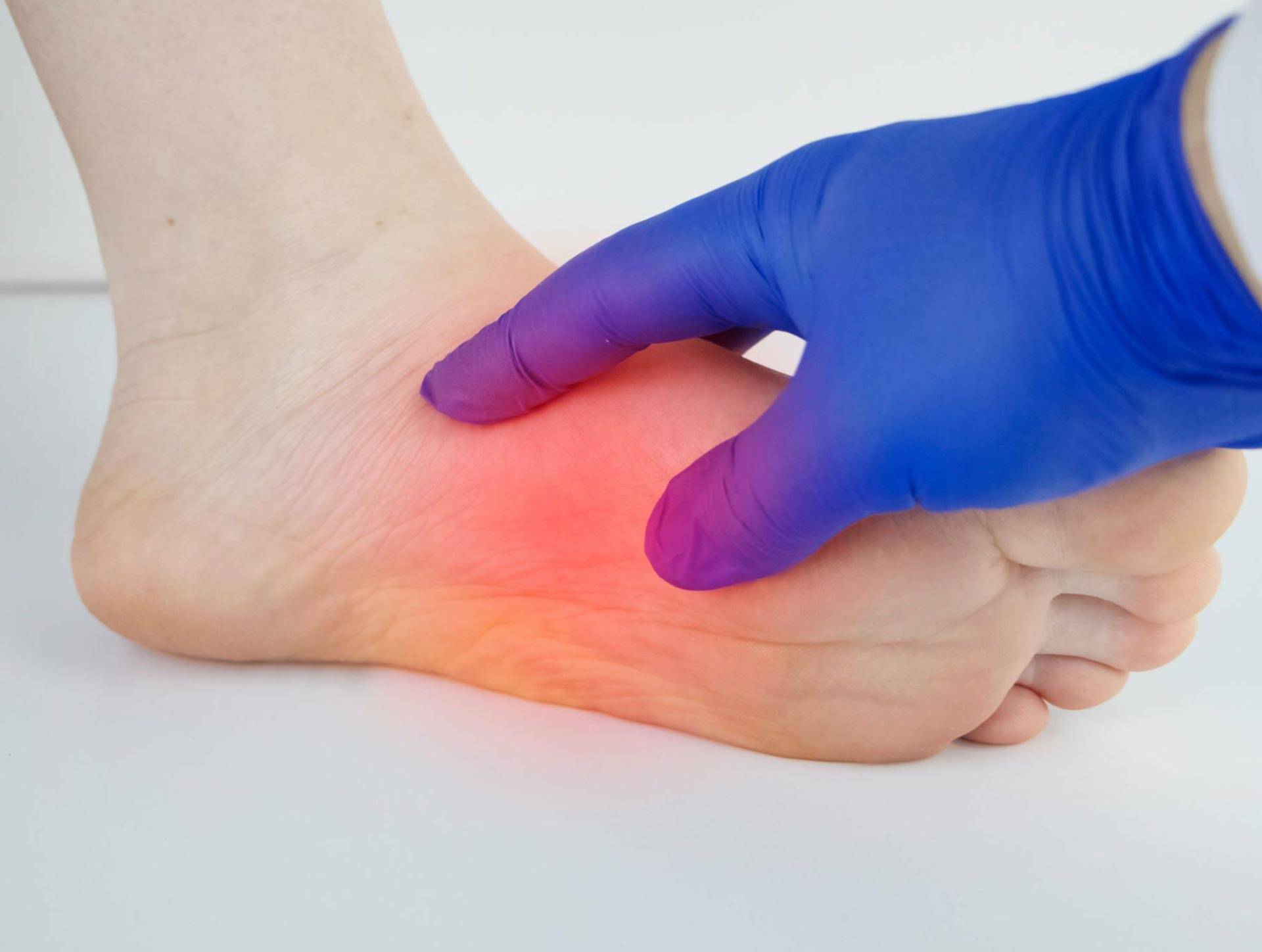
DECEMBER 20, 2023 | 3 Mins Read
TABLE OF CONTENTS
The road to recovery from plantar fasciitis, a condition marked by debilitating heel pain, is often fraught with uncertainty. Caused by inflammation in the foot's arch, this condition can significantly hamper one's daily activities. However, the path to healing is marked by clear signs. This article serves as a guide to those indicators, offering not just medical insights but also a message of hope to those affected by this common foot ailment

Plantar fasciitis arises when the plantar fascia, a thick tissue band connecting the heel to the toes, becomes inflamed, often due to overuse, unsupportive footwear, or excessive strain. This condition manifests as a sharp pain in the heel, particularly intense during the first steps after awakening or prolonged sitting. More than just a source of physical discomfort, plantar fasciitis can significantly disrupt daily activities, leading to a reduced quality of life.
Its impact can extend further, potentially altering walking patterns to avoid pain, which may then cause additional stress on other body parts, like knees, hips, or back. Understanding and addressing this condition is vital to prevent it from evolving into a more chronic and debilitating issue.
The journey to recovery from plantar fasciitis is as unique as the individuals experiencing it. The timeline for healing can vary considerably, depending on several factors. Primarily, the severity of the condition plays a pivotal role; mild cases may resolve within a few weeks, while more severe instances might take several months to show significant improvement. Here are some key factors that can influence the healing process:

Recognizing the signs of healing in plantar fasciitis not only offers reassurance to those affected but also provides valuable insights for adapting treatment strategies. These indicators signal that the body is repairing the damage caused to the plantar fascia and that the treatments are working. Here’s a closer look at the key signs indicating that healing is underway:
One of the most telling signs of improvement in plantar fasciitis is the reduction of morning pain. This specific pain occurs as the foot remains in a contracted position overnight, causing the plantar fascia to tighten. When the inflammation begins to subside and the tissue starts healing, this intense discomfort upon the first morning steps gradually lessens. This reduction in pain is often the first glimmer of healing, signaling that the body's natural repair mechanisms are actively working to resolve the inflammation and repair the fascial tissue.
Plantar fasciitis can make basic activities like walking, standing, or ascending stairs incredibly painful. As healing progresses, patients typically notice a significant decrease in pain during these everyday activities. This change indicates that the plantar fascia is becoming more resilient, adapting better to the stresses of daily movement, and is less prone to inflammation or irritation from routine activities.
Another positive sign of healing is the return of flexibility and mobility in the foot and ankle. Inflammation and damage to the plantar fascia can severely restrict movement due to pain, stiffness, and micro-tears. As these issues resolve, the foot gradually regains its normal range of motion, allowing for more fluid and comfortable movements. This improvement is a clear indication of reduced inflammation and the healing of micro-tears in the fascial tissue.
Reduction in swelling and inflammation is a crucial indicator of healing in plantar fasciitis. These symptoms are typical responses to the strain and micro-tears in the plantar fascia. A noticeable decrease in swelling and inflammation signifies that the body’s healing processes are effectively repairing the damaged tissue, leading to a reduction in these inflammatory responses.
An increase in the pain threshold, or the ability to endure more physical stress without discomfort, is an encouraging sign of recovery. This improvement suggests that the foot is becoming desensitized to the strains and pressures that previously elicited significant pain. It's a testament to the ongoing healing process, indicating that the plantar fascia is gradually regaining its normal function and resilience.
Plantar fasciitis can lead to altered walking patterns, resulting in secondary pain in the knees, hips, or back. As the foot heals and its function improves, this compensatory pain typically reduces. A decrease in discomfort in these areas indicates that the foot is no longer causing additional strain on other body parts, reflecting an improvement in overall body biomechanics.
The healing of the plantar fascia is often paralleled by an improvement in the strength and stability of the foot. This progress is observed through the increased ease in performing exercises targeting the foot's muscles and supporting structures. Such improvements are strong indicators that the plantar fascia is recovering, and the foot is regaining its strength and stability.
Physical therapy plays a vital role in the recovery from plantar fasciitis, with a focus on exercises that strengthen and stretch the plantar fascia and associated muscles. Notable progress in these exercises, such as increased ease of movement, reduced pain during exercises, and improved overall performance, is a clear sign of effective therapy and recovery. This progress indicates that the treatments are working and the foot is on a positive path to regaining its full function.
As you navigate the path to recovery from plantar fasciitis, closely monitoring your healing progress is as important as the treatment itself. This ongoing assessment not only helps in understanding how well the treatment is working but also alerts you to any setbacks or complications. By actively tracking your symptoms and response to treatment, you can play a crucial role in your own healing journey. Below are key methods to effectively monitor your progress:
An effective way to track healing is by maintaining a pain diary. This diary should document the intensity of pain on a scale, the timing of the pain, and activities that trigger or worsen it. Recording the frequency of pain, whether constant or intermittent, is also insightful.
Note any changes in daily activities, such as improvements in walking distances, ability to stand for extended periods, or completing routine tasks that were previously difficult due to foot discomfort. This diary helps in identifying patterns and gauging the effectiveness of treatments, like exercises, orthotics, or medications.
It's important to be vigilant about new symptoms or changes in the nature of pain. A transition from sharp pain to a dull ache, for example, could indicate a shift in the condition. If the pain diary suggests that symptoms are persisting or worsening despite treatment, or if new symptoms emerge, seeking further medical advice is crucial.
A healthcare professional can reassess the situation, possibly recommending additional tests or adjusting the treatment plan. This step is vital to ensure that the recovery is on track and to prevent the condition from becoming chronic or leading to other complications.
Navigating through plantar fasciitis requires more than just medical treatment; it demands a holistic approach that encompasses lifestyle adjustments and home remedies. These changes not only support the healing process but also prevent future flare-ups. Here are some key strategies to effectively support your recovery journey:
By integrating these strategies into your daily routine, you can significantly aid your recovery from plantar fasciitis and enhance your overall foot health. Remember, each aspect of this holistic approach plays a vital role in supporting your journey back to pain-free mobility.
As we wrap up, it's important to emphasize that recognizing the signs of healing in plantar fasciitis is more than just a measure of progress – it's a source of motivation and hope. Your path to recovery may have its ups and downs, but understanding these key indicators will guide you along the way. Stay diligent with your treatment, be patient with your body, and trust in your journey towards recovery. Each step forward, no matter how small, is a move towards regaining your comfort and mobility.
Consider incorporating the Koprez® Plantar Fasciitis Sleeve into your recovery regimen. This sleeve is designed to provide targeted compression, support, and comfort to alleviate the symptoms of plantar fasciitis. For more information or to purchase, visit Koprez's website today.
Author

Claire Evans worked as the content marketing manager at Koprez. Claire combined a background of writing and editing, marketing, and patient education to best serve consumers, fitness enthusiasts, athletes, and anyone who relies on the Koprez brand for helpful information.
Koprez® Featured Products